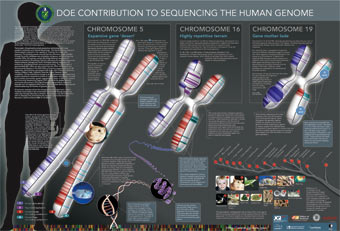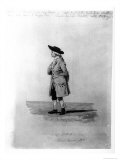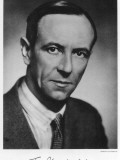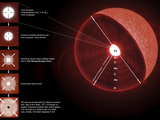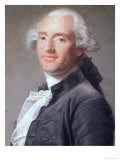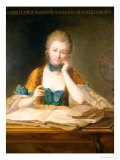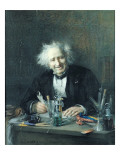|
|
|
|
|
|
|
|
|
|
|
|
|
|
SCIENCE:
PHYSICS & CHEMISTRY
|
|
|
|
|
|
|
|
|
|
|
|
|
|
|
|
|
|
|
 |
|
|
|
|
|
|
Fritjof Capra
b. 2-1-1939; Vienna, Austria
Physicist, systems theorist, and author of five international bestsellers, Fritjof Capra is a founding director of the Center for Ecoliteracy in Berkeley, California. He is also on the faculty of Schumacher College, named after E.F. Schumacher, which is an international center on sustainable living and holistic education courses.
The 1990 movie Mindwalk , starring Liv Ullman, Sam Waterston, and John Heard, is loosely based on Capra's book, The Turning Point. , starring Liv Ullman, Sam Waterston, and John Heard, is loosely based on Capra's book, The Turning Point.
|
|
|
|
Henry Cavendish
b. 10-10-1731; Nice, France
d. 2-24-1810; London, England
Henry Cavendish, FRS (Fellow of the Royal Society) was a 19th century scientist whose eccentric behaviour hid his important discoveries for years. It was only when James Clerk Maxwell published Cavendish's papers in 1879 that it was revealed that Cavendish had made numersous discoveries before other scientists. For instance Cavendish discovered oxygen before Lavoisier and calculated the mass of the Earth that was only 1% off today's measurement.
• Henry Cavendish & The Discovery of Hydrogen
|
|
|
|
Sir James Chadwick
b. 10-20-1891; Bollington, Cheshire, England
d. 7-24-1974; Cambridge
Physicist Sir James Chadwick was awarded the 1935 Nobel Prize in physics for his discovery of the neutron (1932).
Chadwick was the head of the British scientists who worked on the Manhattan Project during World War II, and was knighted in 1945 for achievements in physics.
|
|
|
|
Subrahmanyan Chandrasekhar
b. 10-19-1910; Lahore, Punjab, India
d. 8-21-1995; Chicago, IL
Astrophysicist Subrahmanyan Chandrasekhar, with William A. Fowler, won the 1983 Nobel Prize for Physics “for his key discoveries that led to the currently accepted theory on the later evolutionary stages of massive stars”.
The Chandrasekhar limit, named after him, describes the maximum mass of a “white dwarf star, ~1.44 solar masses, or equivalently, the minimum mass which must be exceeded for a star to ultimately collapse into a neutron star or black hole (following a supernova)”.
NASA also named one of its four Great Observatories (satellites) after Chandrasekhar, the Chandra X-ray Observatory (Hubble Telescope, Compton Gamma Ray Observatory and the Spitzer Space Telescope).
FYI - “Chandra” means “moon” in Sanskrit; Chandrasekhar was the nephew of C. V. Raman, winner of the 1930 Nobel Prize in Physics.
|
|
|
|
Jacques Alexandre Cesar Charles
b. 11-12-1746; Beaugency, France
d. 4-7-1823
Jacques Alexandre Cesar Charles, an inventor, mathematician, professor of physics, and balloonist, discovered Charles’s Law (1787): Under constant pressure, an ideal gas' volume is proportional to its absolute temperature. The volume of a gas at constant pressure increases linearly with the absolute temperature of the gas.
|
|
|
|
Madame Émilie du Chatelet-Lomont
b. 12-17-1706; Paris, France
d. 9-10-1749; complications of childbirth
Madame Émilie du Chatelet-Lomont was a mathematician, physicist and author.
Einstein's famous equation for the energy of matter E=mc2 fits neatly with a principle recognized by Madame de Chatelet 150 years before Einstein. She explained the idea in her book Institutions de Physique (“Lessons in Physics”), which she had prepared for her 13 year old son as a “Cliff Notes” study of the newest ideas of the time.
In addition to being a home schooler she was also great friends with Voltaire, (with her husband's blessing) and translated Newton's Principia into French.
|
|
|
|
Michel-Eugene Chevreul
b. 8-31-1786; Angers, France
d. 4-9-1889; Paris
Chemist and professor Michel Eugene Chevreul work with fatty acids proved important in the soap, food and arts.
He is credited with discovering margaric acid (margarine), and as director of dye works at the Gobelins Manufactory in Paris determined that the yarn's perceived color was influenced by other surrounding yarns, leading to a concept known as simultaneous contrast.
|
|
|
previous page | top | next
Famous Chemist & Physicists List | a | b | CA-CH | Co-Cu | d-e
| f | g | h | i-j-k | l | m | n-o | p | q-r | s | t | u-z
|
|
I have searched the web for visual, text, and manipulative curriculum support materials - teaching posters, art prints, maps, charts, calendars, books and educational toys featuring famous people, places and events - to help teachers optimize their valuable time and budget.
Browsing the subject areas at NetPosterWorks.com is a learning experience where educators can plan context rich environments while comparing prices, special discounts, framing options and shipping from educational resources.
Thank you for starting your search for inspirational, motivational, and educational posters and learning materials at NetPosterWorks.com. If you need help please contact us.
|
|
|


